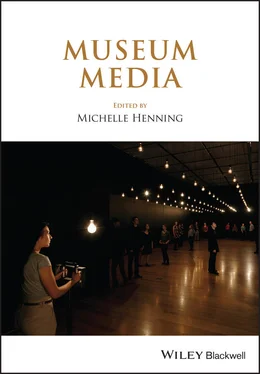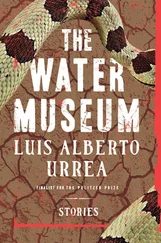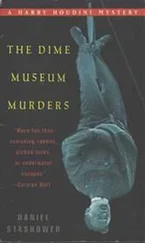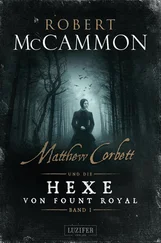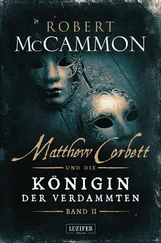Museum Media
Здесь есть возможность читать онлайн «Museum Media» — ознакомительный отрывок электронной книги совершенно бесплатно, а после прочтения отрывка купить полную версию. В некоторых случаях можно слушать аудио, скачать через торрент в формате fb2 и присутствует краткое содержание. Жанр: unrecognised, на английском языке. Описание произведения, (предисловие) а так же отзывы посетителей доступны на портале библиотеки ЛибКат.
- Название:Museum Media
- Автор:
- Жанр:
- Год:неизвестен
- ISBN:нет данных
- Рейтинг книги:4 / 5. Голосов: 1
-
Избранное:Добавить в избранное
- Отзывы:
-
Ваша оценка:
- 80
- 1
- 2
- 3
- 4
- 5
Museum Media: краткое содержание, описание и аннотация
Предлагаем к чтению аннотацию, описание, краткое содержание или предисловие (зависит от того, что написал сам автор книги «Museum Media»). Если вы не нашли необходимую информацию о книге — напишите в комментариях, мы постараемся отыскать её.
Museum Media — читать онлайн ознакомительный отрывок
Ниже представлен текст книги, разбитый по страницам. Система сохранения места последней прочитанной страницы, позволяет с удобством читать онлайн бесплатно книгу «Museum Media», без необходимости каждый раз заново искать на чём Вы остановились. Поставьте закладку, и сможете в любой момент перейти на страницу, на которой закончили чтение.
Интервал:
Закладка:
Besides objects, photographs and film documents are the most frequently used exhibits in museums on contemporary history. If objects appear as authentic because they have been involved in events of the past, photographs and film are often perceived as a window onto the past. Paul Williams observes, critically, that “although the camera was undeniably present, it is a notable initial paradox that, in the museum context, photographs are typically viewed as interpretive illustrations rather than as objects that existed in the world at the time” (2007, 51).
Lately there has been some criticism of an undertheorized use of photographs in museums (Brink 1998; Thiemeyer 2010). Nevertheless, photographs are mostly presented as a reproduction of the past rather than as a representation and interpretation based on a particular device – the camera – and on the point of view of a particular individual – the photographer. Video testimonies are often juxtaposed with photographs or film documents from the time. Occasionally, photographs and film documents are included in the video testimonies themselves, mostly to comment on or illustrate what the witnesses are talking about and vice versa. For example, in the Haus der Geschichte the visitor can watch a video testimony from the mason Lothar Wesner, who was ordered to build the Berlin Wall. The video testimony starts with Wesner relating how he was brought to the corner of Friedrichstraße and Zimmerstraße and started to build under supervision. While Wesner is telling this, the viewer sees some documentary footage, starting with a shot of a soldier and then of some masons building the wall. The origin of the film footage, and whether the mason on the footage is actually Lothar Wesner or the street the Friedrichstraße, is nowhere revealed. Again, the video testimony and the film footage mutually authenticate each other. The film footage serves as an illustration of Wesner’s testimony.
However, video testimonies and film and photographs can also be used to critically reflect on one another. In its section on German reunification, the Haus der Geschichte shows, among other things, a video testimony from the German political singer Wolf Biermann, who was stripped of his East German citizenship while on tour in West Germany in 1976. Biermann recalls here how people laughed at Helmut Kohl’s metaphor of the “blooming landscapes” that East Germany would be turned into. “That fat Kohl was proved right,” he comments; “it took a bit longer, it cost a bit more ... So what, that’s good. I am glad that we have this problem rather than another.” The other witnesses to history that are shown – all of them politicians – agree with Biermann in their positive evaluation of German unification. Right next to the video testimony, the museum shows the cycle of photographs Unterwegs im Beitrittsgebiet (En route through the accession region) that the West German photographer Michael Rutschky took during several journeys into East Germany between 1989 and 1993. The photographs show anything but blooming landscapes: factories, desolate houses, desperate graffiti, poverty, and the process of renovation. The testimony and the photographs here have an illustrative, but also a corrective effect on each other. The photographs suggest that it took – and still takes – time to turn East Germany into an economically blooming landscape. The video testimony relativizes the rather negative impression given by the photographs.
The examples that I have given here are, of course, not exhaustive. Each exhibition using video testimonies is different, and so are the epistemological associations that are made with other museum objects. What the examples show, however, is how video testimonies are used as representatives of the past in their own right as well as critical or affirmative comments on other exhibits. Video testimonies are used to place objects within a framework of lived history that illustrates what the object is supposed to represent. The juxtaposition of video testimonies and other museum exhibits can thereby serve a function of mutual authentication. It can also invite critical evaluation. Both uses, as the example of the exhibition section on the beat generation in the Haus der Geschichte shows, are not necessarily mutually exclusive. Video testimonies can be used to illustrate and authenticate, and at the same time to relativize.
I observed earlier that video testimonies can serve as design elements. Video testimonies are still most prominently used in Holocaust and World War II museums. In many Holocaust and World War II museums, an “aesthetic of horror” has been adopted, with the use of dark colors and large bare spaces – often made of concrete. The dark, monochromatic background that is chosen, and the gray or black stelae that the screens are built into, underline these aesthetics. For example in the Museo Diffuso, located in the cellar of an eighteenth-century palazzo, the stelae almost disappear in the darkened space. How much this gloomy atmosphere has become the standard and how much the aesthetics of video testimonies can serve to underline them becomes apparent when looking at counterexamples. In the Neuengamme Memorial, a former concentration camp memorial in northern Germany, the curators have decided against the aesthetic of horror. 5Consequently, the walls in the old stone barracks in which the exhibitions are located are white and the rooms bright. The video testimonies, many of which were recorded in the 1990s, at a time when a standard aesthetic for video testimonies had not yet been developed, show the witnesses to history in a homely environment such as their living room. The video testimonies therefore underline the comparatively inviting aesthetic of the Neuengamme Memorial. Moreover, while the elaborate video testimonies in museums like the Museo Diffuso tend to make the witnesses to history appear as part of a series, the less sophisticated videos showing them in their home environment further help to present witnesses to history as individuals with a specific history living in a very specific memorial context. 6
Video testimonies as didactic means
Because of their perceived authenticity and the fact that they combine visual elements with textual elements, video testimonies serve as particularly potent didactic means. The witnesses’ testimonies have a bearing on the narrative of the exhibition – or even carry this narrative completely, as in the case of the Museo Diffuso. Through their selection of the particular video testimonies from the collection, and of the extracts from those videos, to include in the exhibition, curators can – and do – structure and model the narrative of the video testimonies and the messages that are transmitted to visitors. Generally speaking, there are three basic messages: video testimonies are used to transmit historical knowledge to visitors, to give them moral lessons, and to affect them. Using the Haus der Geschichte as an example, I will analyze the use of video testimonies as didactic means.
First, since witnesses to history have been physically and temporally part of the events that they testify to, their testimonies are used to transmit historical knowledge to visitors. This is especially the case when alternative documentation is missing. In particular, video testimonies of Holocaust survivors are used to testify to the prisoners’ life in the camps, as alternative documents are often missing. However, the teaching of history with the help of video testimonies does not stop here. Through the selection of extracts and the way in which those extracts are arranged, curators also guide visitors’ interpretation of historical information. In particular, the last sentences, those that conclude the video testimony, are meticulously chosen. Thus, in the Haus der Geschichte, Carola Stern, who in 1945 was a leader in the League of German Girls and later a journalist, remembers that, when they were told by some soldiers that “the Führer has fallen in the battle of the Reich Chancellery,” her mother burst into tears and her cousin cried: “Now there is no sense in life anymore.” She, however, told them: “Are you crazy? Do you believe what he is saying? That man has taken his own life. He has left us alone in the dirt and escaped. That’s the truth!” It does not matter whether Carola Stern really grasped the situation this well at the time – it seems unlikely, since she was a young girl who obviously believed in the National Socialist project and was surrounded by people who did. What is important is that, with her testimony, Carola Stern both forecloses a heroic interpretation of Hitler’s death and interprets her mother’s and cousin’s behavior as irrational and futile.
Читать дальшеИнтервал:
Закладка:
Похожие книги на «Museum Media»
Представляем Вашему вниманию похожие книги на «Museum Media» списком для выбора. Мы отобрали схожую по названию и смыслу литературу в надежде предоставить читателям больше вариантов отыскать новые, интересные, ещё непрочитанные произведения.
Обсуждение, отзывы о книге «Museum Media» и просто собственные мнения читателей. Оставьте ваши комментарии, напишите, что Вы думаете о произведении, его смысле или главных героях. Укажите что конкретно понравилось, а что нет, и почему Вы так считаете.
